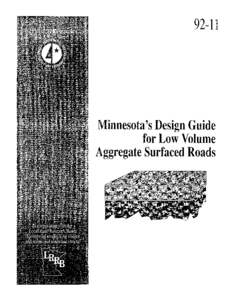Displaying results 1 - 10 of 105
Measurement of Moisture in Aggregate Stockpiles
Creator
Date Created
2001
Report Number
2001-21
Description
Superpave Level One Mix Design at the Local Government Level
Date Created
2001
Report Number
2002-19
Description
Refinement and Validation of the Hydraulic Fracture Test
Creator
Date Created
2003
Report Number
2003-28
Description
Properties and Aggregate Potential of Coarse Taconite Tailings from Five Minnesota Taconite Operations
Date Created
2003
Report Number
2004-06
Description
Validation of Superpave Fine Aggregate Angularity Values
Date Created
2004
Report Number
2004-30
Description
Mitigating Concrete Aggregate Problems in Minnesota
Date Created
1997
Report Number
2004-46
Description
Minnesota Seal Coat Handbook 2006
Date Created
2006
Report Number
2006-34
Description










